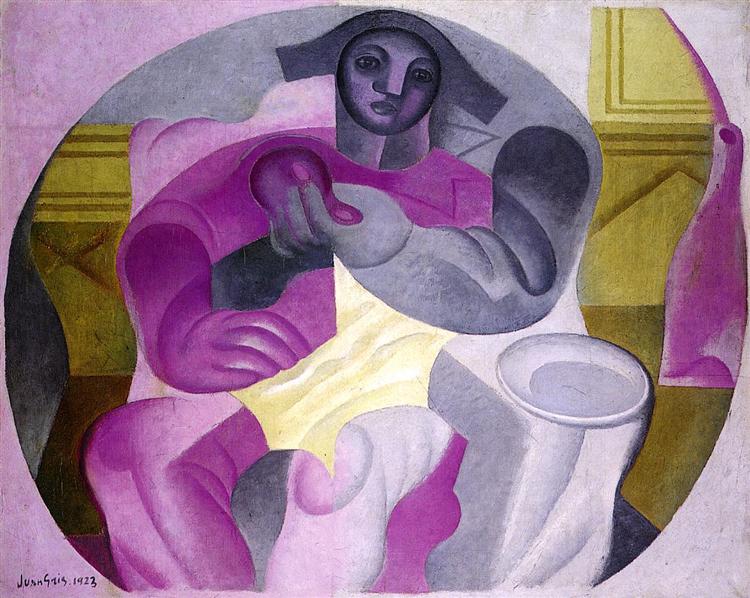Description
Juan Gris's 1923 painting "Seated Harlequin" is a testament to the artist's mastery of Cubism, a movement he helped define and expand during the first half of the 20th century. In this painting, Gris presents a unique and nuanced take on the famous harlequin character, a haunting symbol of the duality between joy and sadness that has fascinated artists and poets throughout the centuries.
From a compositional perspective, “Seated Harlequin” is characterized by its complex assembly of geometric shapes, which emanate a rhythmic energy while maintaining a visual balance. The harlequin figure is broken down into angled planes and covered in complex hues, including deep blue, borrowed from black, with interactions of lighter shades such as beige and white. This choice of color not only highlights the main figure, but also provides a context that suggests a melancholic, yet vibrant, mood. The use of color in the work is particularly striking: it combines both light and shadow, allowing the viewer to experience an almost sculptural depth in the two-dimensional representation.
As we look at the harlequin figure, his characterization becomes evident not only through his pastel-striped clothing, but also through the way his expression and posture intertwine with the surrounding structure. The lines that define his silhouette avoid rigidity, instead suggesting movement and vitality. The seated posture, accompanied by a slight tilt of his body, suggests contemplation and existential apprehension that resonates with the sense of loss and longing present in many of Gris’ works.
The harlequin’s surroundings are a mix of elements that not only frame the main figure, but also create a dialogue between the figure and its context. The abstract shapes surrounding it seem to pulse with life, acting as a visual echo of the harlequin’s emotions. Through this interplay between figure and background, Gris invites the viewer to reflect on the meaning of identity and representation in modern art.
Born in Spain but working primarily in Paris, Juan Gris aligns himself with other masters of Cubism, such as Pablo Picasso and Georges Braque. However, it is his distinctive approach to the use of color and composition that gives him a unique voice. Unlike Cubism's more radical composers, Gris brings a simplicity and elegance that can be found in "Seated Harlequin" and other works in his repertoire. The playfulness of the harlequin, a heraldic symbol of art and culture, allows Gris to explore concepts of tragedy and comedy, adding a layer of complexity to the work.
Gris' ability to blend shapes, lines, and colors into a cohesive unit not only makes "Seated Harlequin" an aesthetically pleasing piece, but also a provocative work that explores human nature. In his fusion of the playful and the profound, Juan Gris once again demonstrates why he is considered one of the pillars of Cubism and an innovator in the use of color and form within modern art.
KUADROS ©, a famous painting on your wall.
Hand-made oil painting reproductions, with the quality of professional artists and the distinctive seal of KUADROS ©.
Painting reproduction service with satisfaction guarantee. If you are not completely satisfied with the replica of your painting, we will refund 100% of your money.

